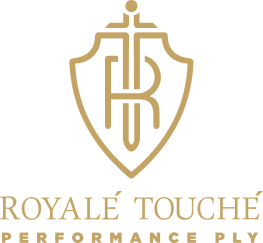

Blockboard Vs Plywood - 6 Key Differences that will Chnage Your Buying Decision

November 8, 2024
Blockboard vs plywood are common choices when one is trying to decide what to use for furniture for home improvement projects.Block board and plywood are commonly used in construction of cabinets, doors, partitions, and a variety of other furniture items. These two materials are different in structure, durability, usage, and cost. This enables one to distinguish one material from the other, thus selecting suitable one for the most suitable for the project.
Major Differences Between Block Board and Plywood
Internal Structure Composition
Plywood is composed of a number of thin layers, or plies of wood veneer glued together with each layer's grain direction rotated 90 degrees from the preceding one. This cross-graining technique provides plywood its strength and resistance to warping or cracking. The thickness and strength of a sheet of plywood vary depending on the number of plies.
Strength and Durability
Plywood comes with excellent strength and durability. Given its cross-layered structure, plywood is highly resistant to warping and splittings. Plywood is the most suitable material for load-bearing furniture, flooring, or any outdoor application where a high strength is compulsory. The pinewood core of the blockboard has lower density, which makes it more vulnerable to bending with heavier weights. The lightweight nature of blockboard makes it suitable for indoor furniture items such as wardrobes, bookshelves, and interior doors where extreme strength is not an issue. Workability and Ease of Use
Blockboard is easier to use than plywood due to the softwood core making it easier to cut, drill, and shape better without splintering. This makes blockboard a recommended material in large-scale carpentry projects where handling ease is a concern. Blockboard is also chosen in making long shelves or large tables as it is stable without warping, especially when over 6 feet in length.
Plywood is denser and harder thereby requiring relatively more effort to cut and shape the plywood. It may also splinter at the edges if veneers are layered onto it. One must use special tools and techniques in cutting plywood.
Resistance to Moisture and Warping
Plywood is less susceptible to moisture than blockboard, because cross-lamination forms a structure in the veneer. It is widely used for outdoor furniture, kitchen cabinets, and bathroom fittings. Moisture distribution within the layers of a ply helps minimize warping and swelling.
Moisture damage can be noticed more in blockboard, which has a softwood core, as compared to plywood. Moisture can penetrate the pockets of the softwood blocks and when it is exposed to moist air for sometime, the material will warp or swell. Blockboard is appropriate for furniture to be used indoors and dry situations.
Block board vs plywood price
Blockboards are cheaper than plywood. This is because the core blockboard uses softwood, which is cheaper than plywood and mainly consists of hardwood veneers. Blockboard is used for low-strength interior furniture projects.
Plywood, especially the high-grade types, like marine plywood, is costly. However they come with superior strength, resistance to moisture, and durability. In applications that necessitate a long-term performance requirement, expenditure on plywood would be warranted.
Applications and Suitability
Plywood is versatile and can be used for a variety of purposes, including furniture-making, flooring, and exterior wall cladding. Because of its strength and durability, it is the first preference for outdoor furniture, kitchen and bathroom cabinets, and any application where good resistance to moisture is of importance. For curved surfaces, plywood can also easily be employed because of its flexibility.
Blockboard vs plywood - one can choose depending on what the project needs are. Plywood is stronger and is more resistant to moisture. Blockboard has greater affordability and lightness when used indoors. Understanding such factors and also comparing block board vs plywood price helps one decide what is the best option they can choose for the project.
Frequently Asked Questions
Plywood is considered to be stronger due to its cross-graining structure, which distributes weight evenly and prevents warping and bending under heavy loads. Blockboard has a core made of softwood strips, which makes it lighter and more prone to bending.
Can blockboard be used in wet places, say kitchens and bathrooms?
Blockboards made with waterproof resins can be used in kitchens and bathrooms as they can resist exposure to moisture. Plywood, especially marine-grade plywood, is an ideal choice for such places.
Which is cheaper? Blockboard or plywood?
Blockboard is cheaper than plywood. However, BWP grade blockboard and plywood are similarly priced. Plywood, high-grade ones with added characteristics can cost higher.
